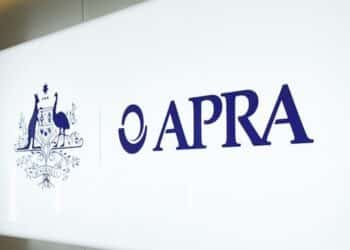Lifespan Financial Planning chief executive Eugene Ardino told ifa the rapid rise in supervisory levies for the 2020 financial year to more than $2,400 per adviser demonstrated the current industry funding model was not compatible with the regulator’s mandate that it take as many cases as possible to court.
“This model has been given to ASIC, not only the funding model but the ‘why not litigate’ framework, and the reason the increase was higher than expected is that the amount spent was higher than budgeted for,” Mr Ardino said.
“I think we need to look at this framework that’s been forced upon ASIC and say is it yielding the results that we want? Is it acting as a deterrent, is it getting good outcomes for clients?”
The comments follow ASIC’s appearance at the parliamentary joint committee on corporations and financial services last week, where commissioner Danielle Press conceded the proliferation of legal actions underway against large institutions had seen the regulator’s upfront costs soar.
“There is a delay in [cost recovery], because the litigation costs are incurred today – they’re not recovered until the litigation is successful, which is two to three years’ time,” Ms Press said.
Mr Ardino said this was the ultimate flaw in the ‘why not litigate’ stance the regulator had adopted since the royal commission, meaning the government should look at alternative funding models if it wanted to continue to pursue industry misconduct cases through the courts.
“If someone asks me why not litigate, I would say because it’s expensive, it’s extremely time-consuming and the outcomes are often very unpredictable,” he said.
“The court process is slow and there’s avenues for appeal. If you want court justice you’ve got to be very patient and you’ve got to have deep pockets, that’s how our legal system is designed. Whereas in a situation where a reasonable outcome can be negotiated, perhaps that is better for the consumer and the taxpayer.”
Mr Ardino said it made sense for the government to consider capping the costs charged to industry if they were serious about retaining the accessibility of advice for more consumers as large numbers of advisers exited the sector.
“In an industry where costs are skyrocketing and you’re seeing a mass exodus – a third of the advice community has departed in just over two years – the government’s got to look at capping it. Perhaps the government tips in whatever the extra is, or looks at it in a more targeted way around where is a lot of the money being spent,” he said.
“We keep hearing the government say they want to make advice more accessible – I would say stop saying it and do something that makes it more accessible.”




ASIC, given advisers are funding your litigation when can advisers expect their share of the proceeds from successful cases?
The entire industry is a mess – not just this. The public is suffering severely.
You only get cost recovery if you win and even then you only get about 50% of your costs back. If you lose, you pay your own costs in full and they are eye watering plus typically half of the other side’s costs.
In other words, advisers pay ASIC’s costs for any unsuccessful court action and that includes appeals and decisions overturned. For all litigation advisers can expect to pay half of ASIC’s costs and for the many cases that are lost, advisers pay ASIC’s costs in full and about half of the potentially much higher costs of the defendants.
It’s easy to make a decision to spend someone else’s money. ASIC has proved time and again that without some form of accountability they will continue their spending, even it is to fund their own personal tax expenses. They don’t care it isn’t their money. The government doesn’t care either. Given the choice of having to fund it themselves or get the industry to pay, they will always pick the later. Look forward to AR levies close to $10,000 in a few years time.
This is a very common sense approach to a mess which is now out of control. I hope someone at ASIC is listening.
What I would someone to ask the parliamentary inquiry and government, “How is it in the Best Interests of Advisers and clients, that AFSL/advisers pay for funding the ASIC and their litigation on a user pays basis, when the proceeds of penalties the AISC receives don’t go to the ASIC, they go to consolidated revenue?
Additionally the AISC have said it’s a timing issue, so does that mean they’ll refund AFSL’s the fees they are charging now, once penalties are received from the litigation? I’m sure the answer will be no, making ASICs response to the parliamentary inquiry just a fob off!
How is any of this equitable or in line with making advice affordable?
Well said, it is refreshing to hear a public statement against ASIC by an organisation. Pity others don’t follow suit and the likes of AFA and FPA etc don’t also start petitions against an inept expensive and biased regulator.